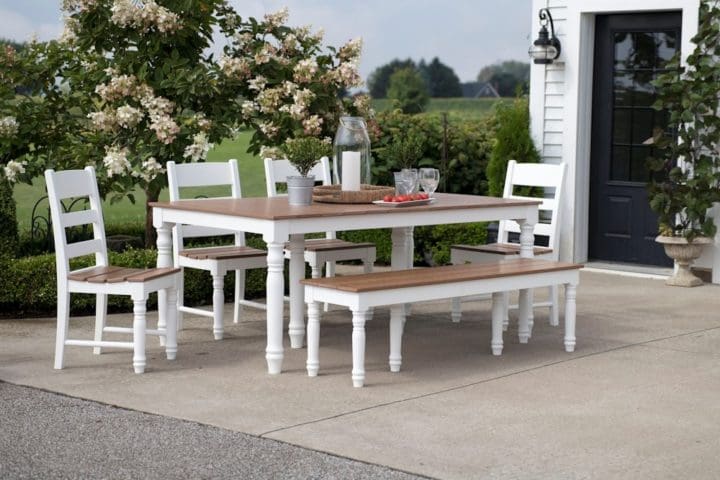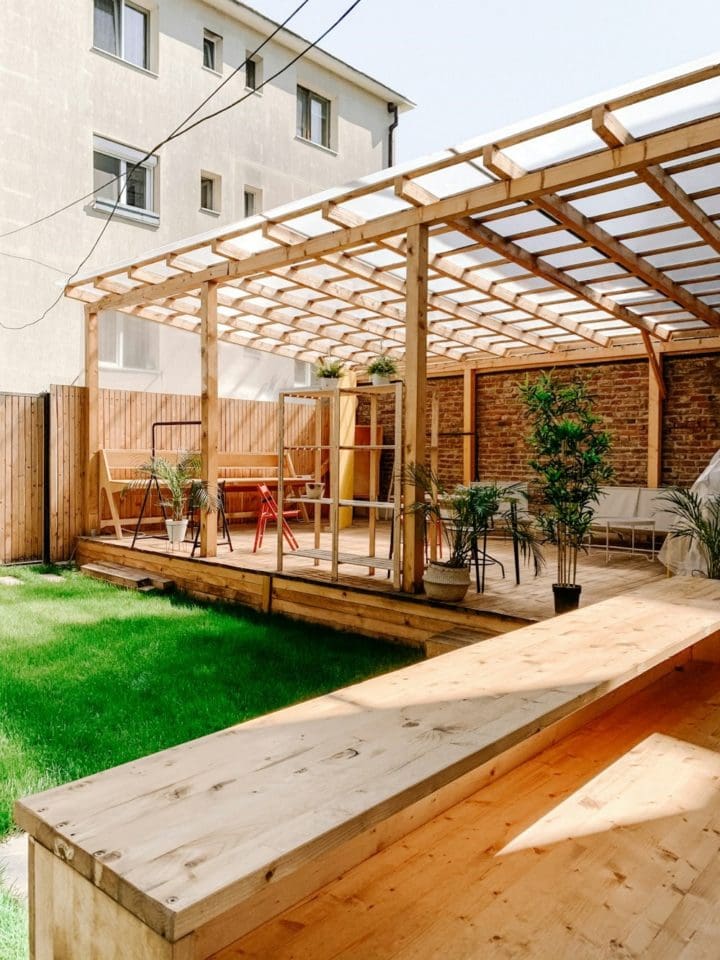Shark Rotator TruePet Powered Lift-Away
When you live with children and even pets, you know how dirty your floors can get. Between pet hair, food crumbs, dirt, dust, and everything else that makes it way to the floor, your...
With summer fast approaching, thoughts turn to long evenings sitting out in the garden with drinks, food, and the company of loved ones. You pour your heart into crafting the perfect space indoors, so why not give your garden the same love and care? A bespoke outdoor dining space can give you the ultimate dining experience. While some people are lucky enough to have balconies or terrace gardens, many of us lack a specific outdoor dining area. Thankfully, you can design and create an outdoor dining space so you can host barbecues and meals this summer. In this guide, we will look at the most popular options for garden dining spaces, their advantages, and how you can implement them.

A patio — a paved area of ground usually directly adjoining a house — is the most popular type of outdoor dining space. Patios can be constructed from materials such as stone, concrete, brick, tile, and/or gravel. You can check out Rochester Concrete Products for a variety of high-quality concrete options ideal for building durable and stylish patios.
One of the advantages of a well-constructed patio is its durability — hard materials like concrete and stone are likely to withstand various weather conditions as well as the weight of people, furniture, and other potentially heavy items. Although materials like concrete can become cracked or damaged, fixing concrete with epoxy resin is straightforward. Epoxy resin can fill, repair, and bond cracked or broken concrete paving slabs. Aside from repairing potential damage, patios require very little maintenance and can last for decades.
The most common method of laying a patio involves placing paving slabs, tiles, or bricks over a flat bed of concrete. To create a flat concrete bed, you’ll need to dig out an area to your desired shape and size, removing any topsoil, plants, roots, and anything else that may get in the way. Next, mix the right amount of concrete and fill in the area. You can use a spirit level to make sure that the surface is level.

Like a patio, a deck is also low-maintenance once constructed, although the process of building a deck is typically more elaborate. A deck is made up of horizontal boards (typically grooved to reduce the chance of slipping) attached to structural joists. These joists are fixed to a ledger — a horizontal board fixed to the house’s exterior wall. Although you can build a freestanding deck without a ledger, these can be prone to shifting out of place over time. Decking materials include wood, PVC, or composite.
A deck can be installed either at ground level or raised, depending on your preference. This can give you a degree of personalization that’s more difficult to achieve with a patio. If you want a slightly elevated view of the rest of your garden, a deck may be your best bet. However, there’s a slight possibility that you may require planning permission if a deck is elevated to a high level, so make sure to do your research first. Once all the formalities are sorted, you can get started on designing and decorating your new deck – in other words, the fun bit!

Whether you choose a patio or decking, you may also opt to add a pergola. Pergolas are structures built from four or more vertical posts (typically wooden) supporting a grid of beams as a roof. Although pergolas don’t provide shelter from the rain or other elements, they can prevent birds from encroaching on your dining space to steal your food! Pergolas provide partial shade while also letting in warmth and sunlight, and can also be visually attractive centerpieces in a garden. You can attach climbing plants, lighting, curtains, or other decorative elements to pergolas for extra aesthetic interest.
Eco-Friendly Decking Sustainable Materials for Your Outdoor Space
To construct a pergola, you’ll need lumber for the posts and beams, as well as fasteners and concrete to anchor the posts in place. A pergola is best built on level ground, with holes for each post. If you have a deck rather than a patio, you can attach a pergola by securing its posts to the deck surface with anchor brackets or post bases, and fasteners such as screws and bolts.
There is no one-size-fits-all approach to creating the perfect outdoor dining space. Whether you opt for a patio or decking, what specific materials you use, the size and shape of the area, and whether or not you add a pergola, are all up to you. You also have plenty of options for furnishing the space — these range from the simplicity of the classic park dining bench to a more elaborate setup with reclining chairs and fire pits, and anything in between!
Concrete Floor Resurfacing: Making Your Home Look Like New Again